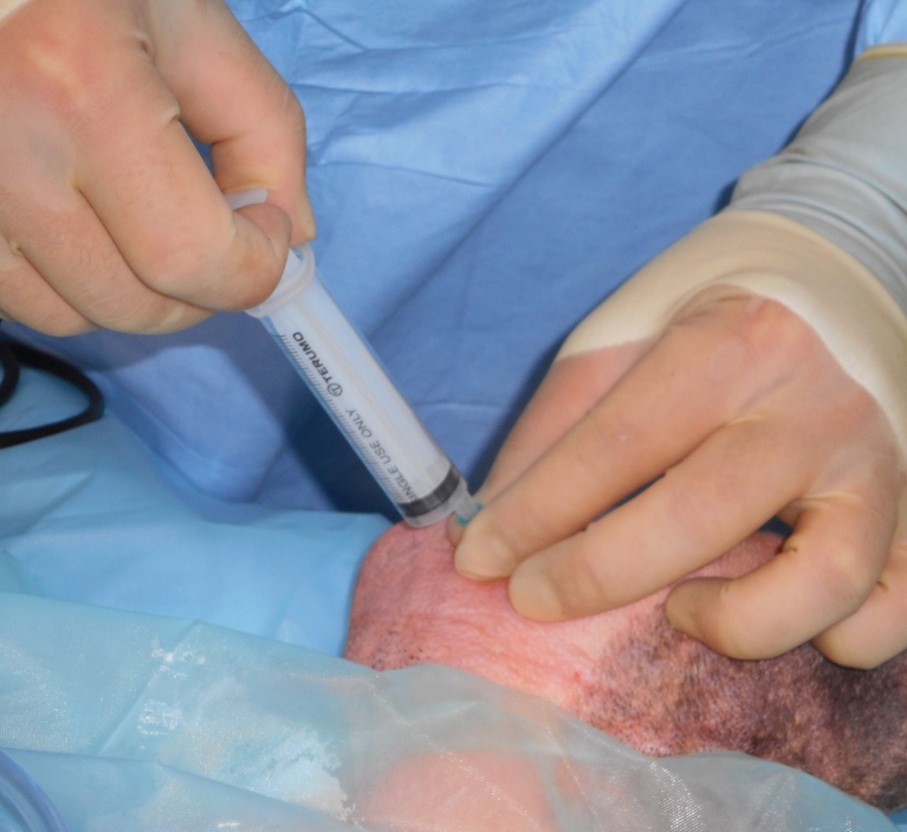Information about RVC Canine Stem Cell Services for Vet Professionals
What is the process for applying for RVC canine stem cell services?
If you wish to refer a patient for assessment and stem cell treatment at the RVC, then please make a routine referral with the Orthopaedic Service at the RVC Queen Mother Hospital for Animals, see Stem Cell Clinic.

Alternatively we can work with your clinic directly – simply contact us. We will send you our sample submission form, transport container and protocol for collecting the adipose tissue.
Stem Cell Centre services
– please contact us for prices
- Preparation and supply of up to 40 million adipose tissue mesenchymal stem cells (including cryobanking)
- Expansion of cryopreserved cells
Cryopreservation - Options for future treatments
As part of our standard service, we freeze stem cells for long-term storage (cryobank). This means we can culture more cells at a later date for a reduced cost if additional stem cell therapy is requested in the future. This is often the case for dogs with arthritis, where a repeat treatment 6 or 12 months later can be beneficial. Cryopreserved cells will be stored for up to five years.
FAQ
How do I know if I my client’s dog is suitable for stem cell therapy?
Autologous mesenchymal stromal cells (MSCs) (also referred to as mesenchymal stem cells) are now being used in small animal clinics to treat a range of conditions. They are most commonly used for the management of degenerative joint disease and osteoarthritis, including cases where more conventional therapies are not working or as an attempt to delay or avoid surgery. Published data suggests that stem cell therapy can have beneficial effects in dogs with osteoarthritis, and working from our experience with the horse, it could also be considered in selected tendon injuries.
Typically stem cell therapy is used in dogs with:
- Late stage osteoarthritis; commonly stifle or elbow where conservative/medical management is less effective or the side effects of treatment no longer tolerated. However, other joints may also be suitable.
- We do not currently consider this treatment an alternative to surgery for cruciate rupture or patellar luxation that cause lameness, however some dogs that subsequently develop secondary osteoarthritis may benefit from stem cell therapy later in life.
My client wants to pay for this using pet insurance – what is the process for this?
We recommend your client contacts their insurance company before seeking treatment, to check if stem cell therapy is covered by their policy.
Does the RVC offer an advice service about canine stem cell therapy services?
The SCC is linked to the two world-class referral hospitals at the RVC (the Equine Referral Hospital and the QMHA) where our clinicians all have extensive experience of stem cell therapies and can advise you on the best approach.
What quality levels does the RVC adopt for canine stem cell therapy?
There are currently no agreed industry standards for canine stem cell services. However, we apply the same rigorous Veterinary Medicines Directorate (VMD) standards used for our equine stem cell services. The RVC Stem Cell Centre is one of only a few UK centres licenced by the Veterinary Medicines Directorate for the production of autologous equine stem cells. To ensure that the stem cells that we prepare are of the highest quality, we apply quality control measures that monitor the product for sterility and for markers of mesenchymal stem cells.
The stem cell products that we prepare are known as enriched stem cells, as they are expanded in number in the laboratory. This is different to minimally manipulated stem cells, where cell preparations made from fat or bone marrow are injected into the recipient without undergoing further growth and expansion in the laboratory. This whole tissue cell population is a mixture of many different cell types of which stem cells form only a small percentage. There are currently a greater number of studies published supporting the use of enriched stem cells for the treatment of joint disease in dogs, although the two treatments have not been compared to date.
